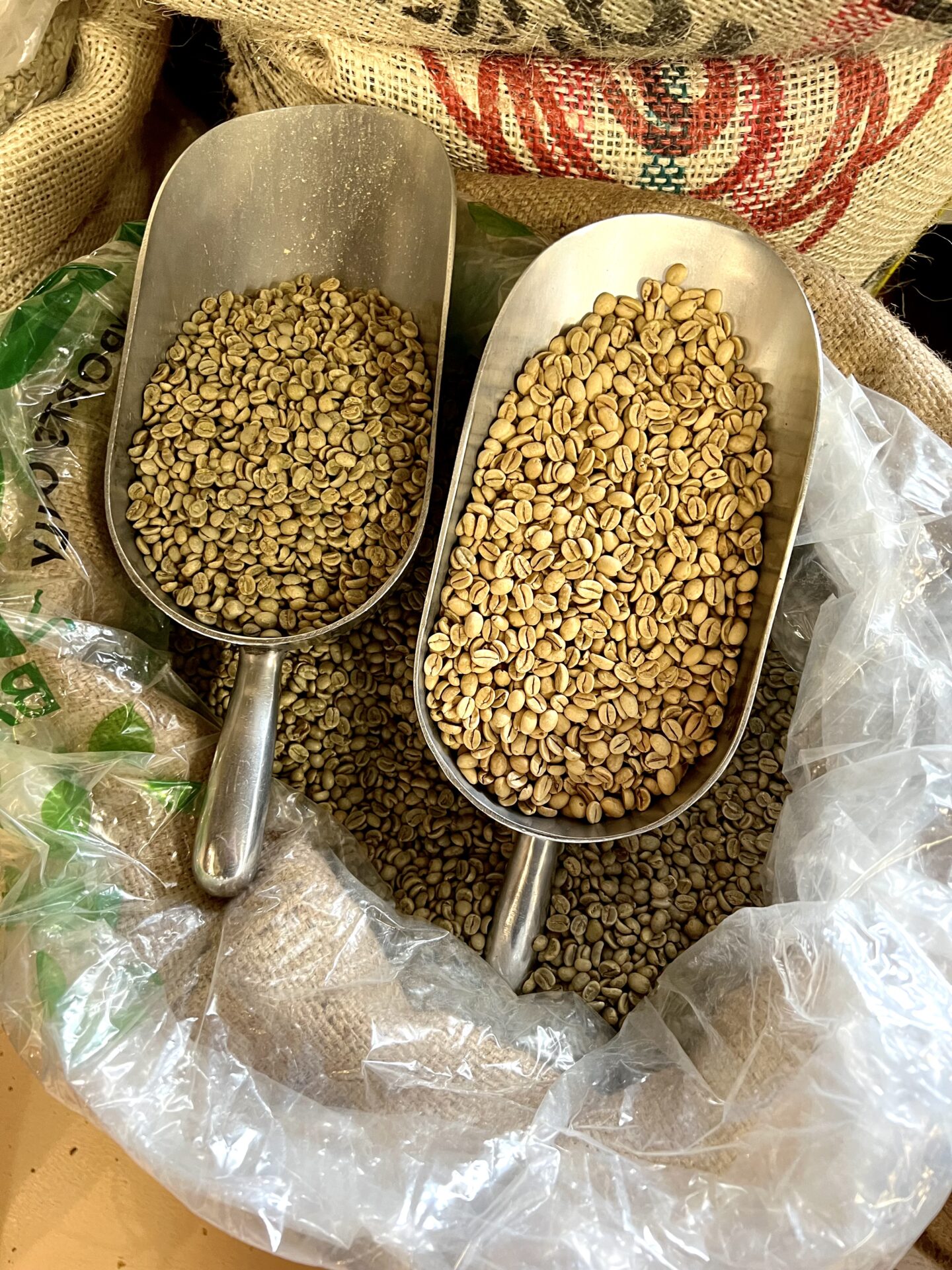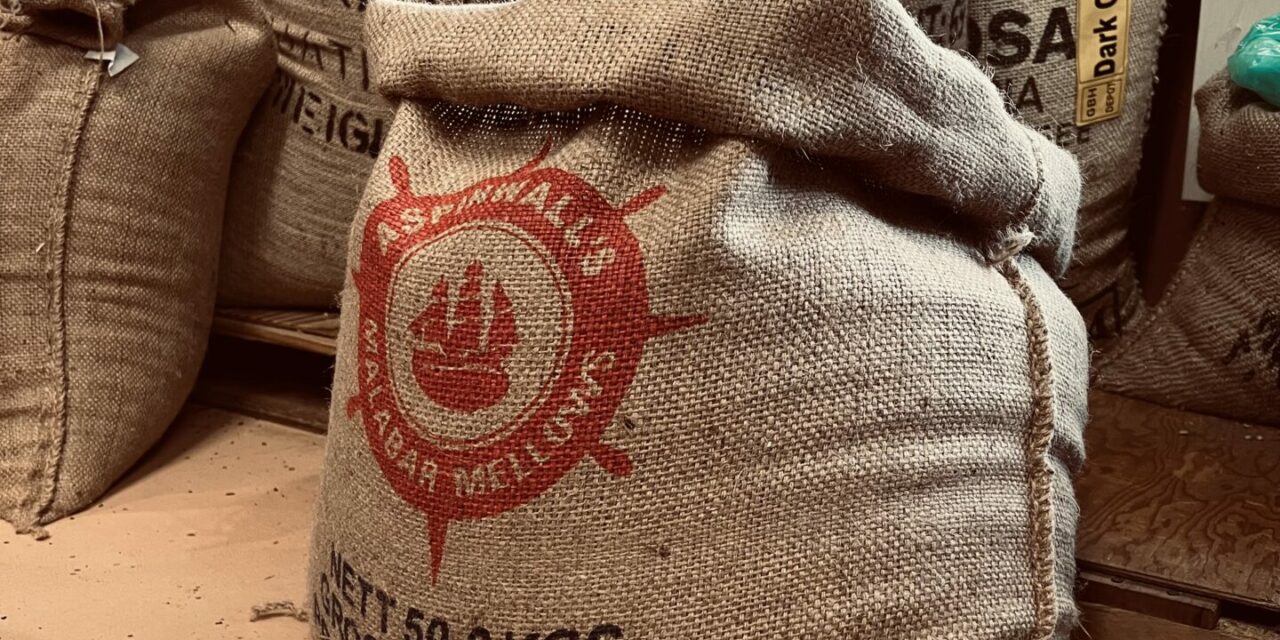A Brief History Of Monsooned Malabar Coffee
Coffee was first brought to South Asia, the legend goes, by a 16th century Indian Sufi saint, Baba Budan. He was on his way home from Mecca after performing Hajj when he stopped at the Yemeni port of Mocha. There, he tasted Qahwa (a traditional Arabic coffee) for the first time. So smitten by the drink was he, that he smuggled seven coffee seeds back to India, hidden in his capacious beard. He planted them on a hill in the Chikmagalur district in Karnataka, marking the beginning of coffee cultivation in India.
Coffee exports from the subcontinent really took off during the 19th century. Beans were transported on 19th century wooden sailing ships, called clippers, from India to Europe. On the long voyage around the Cape of Good Hope that lasted about six months, unwashed coffee beans were stored in the damp holds of these ships, exposed to wind and humidity. As a result, they lost some of their acidity and developed distinctive aromas and flavours that many European consumers came to appreciate.
As steam-powered ships became the norm and the Suez Canal opened, the time it took to transport beans from India to Europe shrank to only about a month. Reportedly, European consumers, especially those in France, Norway, and Switzerland, missed the characteristic flavour profile of Indian coffee to which they had become accustomed. In response, coffee exporters along the Malabar coast in southwest India devised a process that simulates the effects that a prolonged journey over the high seas used to have on coffee beans. The resulting coffee was christened “Monsooned Malabar”.
The Monsooning Process
The “monsooning” process is carried out at coffee-curing establishments situated along the southwestern coast of India. It involves storing coffee beans in open warehouses over twelve to sixteen weeks during the monsoon season (June-September). First, the beans are spread out on cement floors for about ten days, raked frequently so that they are uniformly exposed to the elements. Next, they are loosely packed into burlap sacks that are left unsealed and stacked in rows (with plenty of room between rows), once again exposed to the monsoon winds. The beans are mixed and sacks repacked every week to ensure even exposure and to prevent the development of mold.
The unique climactic conditions in this region at this time of year, including winds that are saturated with moisture and relative humidity that can be as high as 100%, impart idiosyncratic qualities to the beans. Monsooning alters the micro-biological profile of coffee beans, leading to changes in flavour. By the end of this process, the beans also swell to almost twice their volume and lose some of their acidity, while their colour is transformed to a pale yellow (pictured below).

What Does Monsooned Malabar Taste Like?
While Monsooned Malabar is often used in blends to add body and richness, I think its charm is best appreciated as a single-origin coffee. A cup of pure Monsooned Malabar is full-bodied and mellow, with low acidity, delicate notes of spice and almonds, and a faintly earthy ambience. It strikes me as particularly balanced and harmonious in terms of its structure, with acidity and softness in pleasing equilibrium.
Protected Status
Fascinatingly, most of this coffee’s characteristic traits are a result of terroir transmitted not in the coffee plantation but in warehouses during the curing process that the beans undergo. Monsooned Malabar is protected in India as a geographical indication (this is a form of intellectual property protection for products that originate in a specific region and display unique, identifiable characteristics that are a result of their geographical origin; you can read more about geographical indications here). This means only coffee produced in southwestern India along the Malabar coast that runs through three Indian states – Karnataka, Kerala, and Tamil Nadu – can be labeled “Monsooned Malabar”.
Where to Get Monsooned Malabar and How to Prepare It
I found two roasters in Toronto who import and roast Monsooned Malabar on site before they ship it to you: Dark City Coffee Company, which custom roasts the beans and ships them out on the same day or the next day; and Java Works Coffee Roasters, which offers small batch roasts. There are other roasters in Ontario who have similar options (though I have not yet had the opportunity to sample their coffee).
I visited Dark City earlier this week to learn more about their roasting process and their experience working with this type of bean. It was interesting seeing and smelling the raw beans and watching them roast a batch for us. I learned that Monsooned Malabar beans are markedly less dense than the average coffee bean. As this photo illustrates, a pound of Monsooned Malabar clearly takes up more space than a pound of conventionally processed coffee (the example in the photo below is a conventionally processed coffee from Guatemala).

One of Dark City’s roasters, Kevin Plener, describes the unique flavour profile of this coffee as akin to “drinking from a garden hose in summer … in a good way”. I can see what he means. When asked what level of roast he recommends for this coffee, Kevin said that ideally it should be roasted a little past “first crack” but before the beans enter, or just as they are beginning to enter, the “second crack” phase. This brings out the flavours in the coffee in the best way. So really, the perfect level of roast is somewhere between light and medium (pictured below).

Others suggest a full city roast, which is on the darker side of medium (see here, for example). Still other roasters, such as Java Works, seem to prefer a dark roast.
I picked up some Monsooned Malabar from Dark City (light-to-medium roast) and Java Works (dark roast) and brewed myself a cup of each to compare them. Dark City’s light-to-medium roasted coffee had a distinctly earthy character, accompanied by aromas of musty spices that reminded me of an old, now empty spice jar. There was an allusion to dark chocolate as well, and by this I mean a very faint hint when compared to chocolate aromas in many other coffees. I liked how mellow and rounded this coffee felt on the palate, with gentle, pleasant acidity.
On the other hand, a cup of Java Works’ dark roast displayed toasty aromas that reminded me of the way my hair smells after an evening by a wood fire, alongside subtle notes of burnt caramel. There was also a hint of something nutmeg-adjacent, elusive on the nose and more noticeable on the palate. Here, earthy, musty notes were less perceptible. This roast was also decidedly more bitter and less acidic.
Overall, I thought the light-to-medium roast highlighted the peculiar allure of Monsooned Malabar more effectively, making it easier to discern and appreciate its unique qualities. This roast also produced a coffee that felt more mellifluous and balanced on the palate.
As for how best to brew Monsooned Malabar, Kevin of Dark City suggests either pour-over or French press. In his view, it is important to extract the flavours and oils from this coffee. This is a high-quality bean, he notes, “so you want to taste as much of its flavours as possible”. Both these processes allow one to control the level of extraction of flavour and oils from the ground coffee. If one decides to use the pour-over method, he suggests using a stainless-steel rather than paper filter as the paper can absorb some of the beans’ precious oils.

Toby Chan, a barista and a roaster at Dark City, prefers using a French press when brewing a cup of Monsooned Malabar. The French press is more effective at extracting oils from the bean, he says, creating a cup of coffee with more body.
A Final Note
In the end, the perfect level of roast and ideal brewing method is, as with so many things relating to wine, food, and coffee, a matter of opinion and preference. The best way to prepare your cup of Monsooned Malabar is however you most enjoy it! If you like pairing your coffee with food, I suggest a piece of single origin dark chocolate or a slice of light coffee cake. I also tried a cup of light-to-medium roasted Monsooned Malabar with an Amaretto cookie and really liked it. The coffee’s sweet cherry-like acidity and subtle bitterness complement the sweetness of the cookie.







